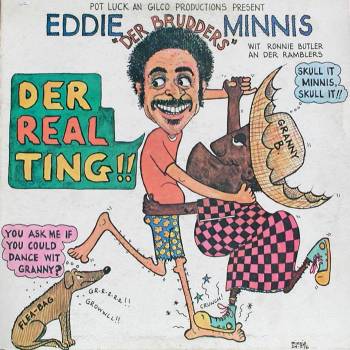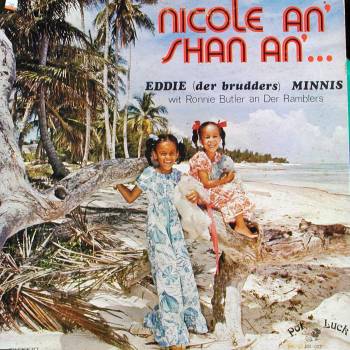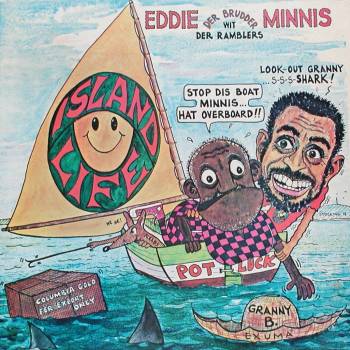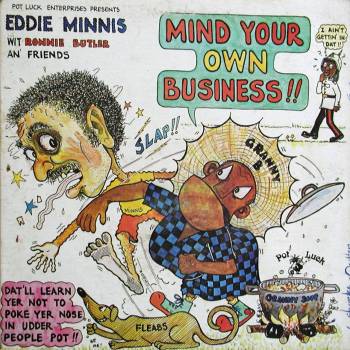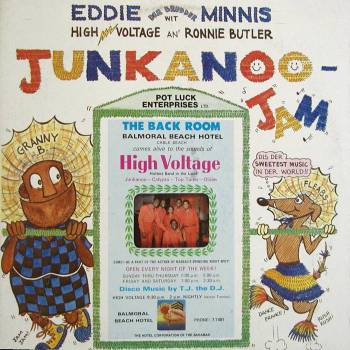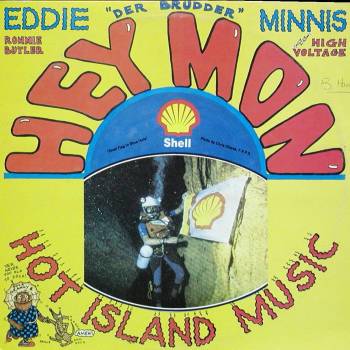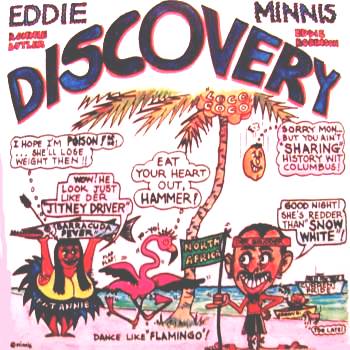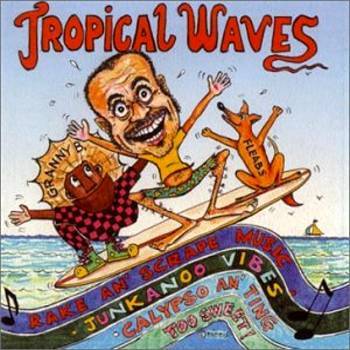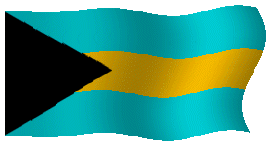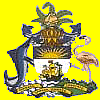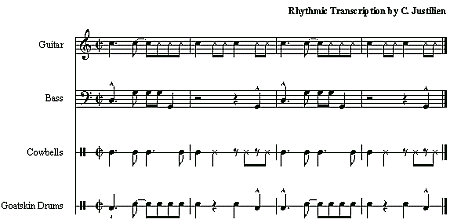
Eddie Minnis describes his music as Goombay-Calypso. The music of The Mighty Sparrow and other calypsonians from all over the Caribbean and West Indies helped in defining Eddie's songwrighting style. The adaptation of these styles included taking simple melodic structures and telling the story of everyday folk and events. One thing that Eddie was able to do is to bring much humor to the everyday challenges that we as human beings face. The music style was clearly influenced by popular musician and friend Ronnie Butler, who in his own right defined what we now know identify as Bahamian music. The involvement of the High Voltage band (today known as Baha Men) brought the junkanoo sound to Eddie's music in the 80's. One thing remained constant through-out, Eddie developed a way of telling his story and making us laugh at ourselves. The two songs featured in this review will feature the two different styles, that of the calypso style of Ronnie Butler followed by the junkanoo sound of High Voltage. Both examples are composed by Eddie Minnis, but interpreted very differently by the two bands.
One of the songs that has become a classic Eddie Minnis is the song 'Buffet'. The song like most calypso songs from this region follow a simple I, IV, V progression. Ronnie Butler and Der Ramblers provide accompaniment for this song. Rhythmically, the guitar plays a very important role. The X note heads indicated in (fig. 1) are muted and staccato, giving the music a syncopated feel although the eighth notes are constant. The bass, on the other hand, plays in the style popular in Latin American music, always anticipating the strong beat of the following measure. The absence of the bass on the strong beat creates forward motion that conducive to the dancing that is done to this style of music. When combined with the other instruments of the rhythm section, there is no shortage of rhythmic variation in the overall arrangement. Lyrically the following song presents light humor about Bahamians attending a banquet in Paradise. Another example of the everyday occurrences that Eddie would write about.
Calypso rhythm - The bass and guitar are very important elements in calypso music. Below is a sample pattern of the roles that these two instruments play.

The rhythm on this next piece places emphasis on the strong beat as opposed to that of the calypso. Junkanoo is more closely related to the funk music of the R 'n' B bands of the United States. In fact, junkanoo music has more of a marching feel with the emphasis placed at the beginning of the measure. While calypso, because of the weak stress at the beginning of the measure lends itself more readily to popular caribbean dances. The use of cowbells and goatskin drums also stresses the strong beats much more than percussion works in calypso music. With this variation in music, Eddie still finds a way to bring his humor to music. Rhythmically, music of African origin are extremely complex, the use of poly rhythms are ever present and due consideration should be given to the many musicians performing this music. These rhythmic variations can and must be compared to the complex arrangement of notes in European classical music. In the example below (Fig. 2), the X note heads represent muted sound on the guitar and the hitting of two cowbells together in the cowbell section. The use of horn sections were not very common with Bahamian bands by the 1980's, but Eddie made good use of them on many of his songs. The brass section in this song was performed by Neville Sampson (trumpet), Lou Adams Jr. (trumpet) and Andrew Richardson (saxophone).
Junkanoo - The music of junkanoo is much like jazz, highly improvisational. The major difference is that the improvisation is a rhythmical one. Below is a simplified version of what happens in a rhythm section playing in the junkanoo style.
  

|
